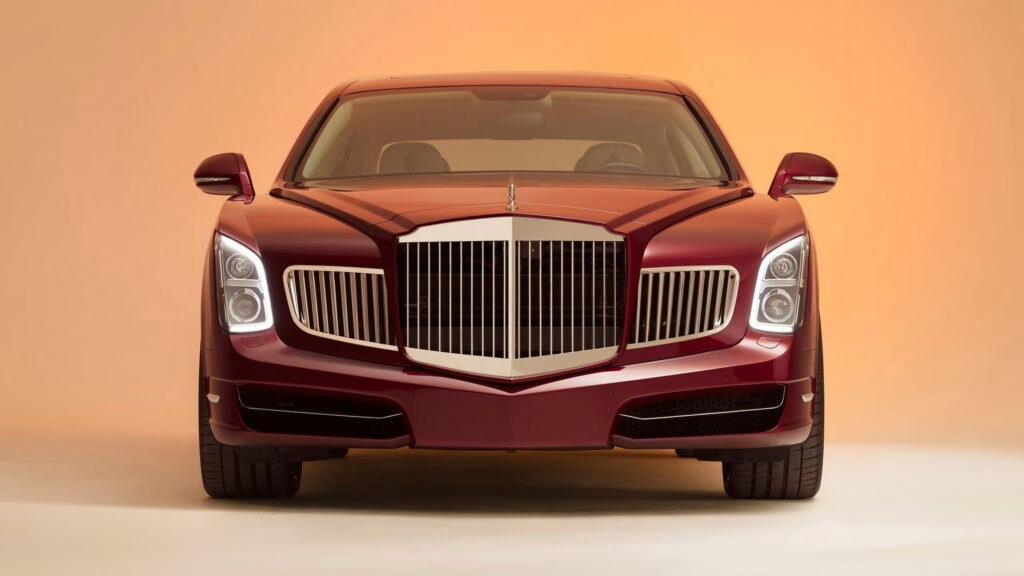What Makes the Packard Excellence a True One-Off Luxury Sedan?
Imagine seeing a car that blends the stately presence of a Bentley with the lost grandeur of Packard and a dash of French flair. That’s exactly what the Packard Excellence delivers—a bespoke luxury sedan that exists as a single, meticulously crafted example. This isn’t just another high-end car; it’s a rolling tribute to automotive history, realized through the vision of a determined collector and the skilled hands of Dutch coachbuilder JB Classic & Bespoke.
Why Did Someone Revive the Packard Name After Decades?
Packard, once a symbol of American luxury, faded from the scene in 1958. Yet, its legend never really died. For some enthusiasts, the idea of a modern Packard was more than a daydream. One such visionary decided to commission a car that would honor the brand’s heritage while bringing it firmly into the 21st century. The result? A unique sedan that doesn’t just mimic the past but reinterprets it, drawing inspiration from both the original Packard lineage and the rarely seen Facel Vega Excellence—a French luxury car that almost became a Packard in the late 1950s.
How Did Dutch Craftsmanship Shape the Packard Excellence?
The Excellence is a product of collaboration between JB Classic & Bespoke, known for their restoration and custom builds, and CinovarA, a local design and engineering firm. Together, they took the bones of a second-generation Bentley Flying Spur (2013–2019) and transformed it into something entirely new. The process wasn’t quick or easy—over 17,000 hours went into redesigning the bodywork, engineering custom details, and ensuring every line paid homage to Packard’s storied past.
What Design Elements Set the Packard Excellence Apart?
At first glance, you’ll spot the Bentley proportions—after all, the greenhouse, pillars, and roof structure remain. But then the details jump out. Vertically stacked LED headlights channel vintage Cadillac vibes, while a three-piece chrome grille and a foldable Goddess of Speed ornament anchor the front end. The profile is sharper, with dynamic lines and rear-hinged suicide doors reminiscent of Rolls-Royce. Those doors aren’t just for show; they required entirely new hinges and hand-formed stainless steel handles. At the rear, C-shaped LED taillights and a Packard emblem complete the look, blending nostalgia with modern craftsmanship.
Is the Packard Excellence All Show, or Is There Substance Underneath?
Mechanically, the car stays true to its Bentley roots. The Flying Spur donor was available with either a twin-turbo 4.0-liter V8 or a mighty 6.0-liter W12. JB Classic & Bespoke hasn’t revealed which engine powers the Excellence, but either way, you’re looking at serious performance wrapped in bespoke luxury. The real magic, though, is in the transformation—taking a modern British sedan and infusing it with American and French design cues, all executed to a standard that rivals the world’s best.
How Much Did This Bespoke Build Cost, and Is It Worth It?
No official price tag has been shared, but let’s be real: a one-off project that took 17,000 hours and required extensive custom fabrication doesn’t come cheap. For context, bespoke coachbuilt vehicles often run well into the seven-figure range, especially when starting with a high-end platform like the Bentley Flying Spur. But for the collector who commissioned it, the value isn’t just in exclusivity—it’s in reviving a dream that never quite made it off the drawing board.
What Does the Packard Excellence Mean for the Future of Coachbuilt Cars?
The Excellence isn’t just a tribute to Packard or a nod to the Facel Vega project that never was. It’s proof that there’s still a place for true craftsmanship and imagination in the automotive world. As mass production and electrification reshape the industry, bespoke builds like this remind us that cars can still be art, history, and personal statement all at once. According to recent data from the Historic Vehicle Association, interest in custom and coachbuilt classics has grown by nearly 15% over the past five years, signaling a renewed appreciation for vehicles that break the mold.
The big takeaway? Reviving icons like Packard isn’t about perfection—it’s about smarter adjustments and bold vision. Start with one inspired idea, and you might just create something that stands out for decades to come.

